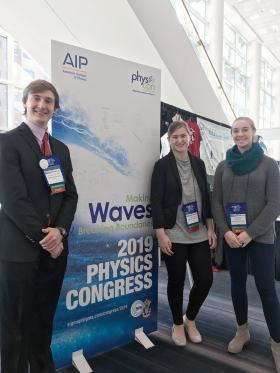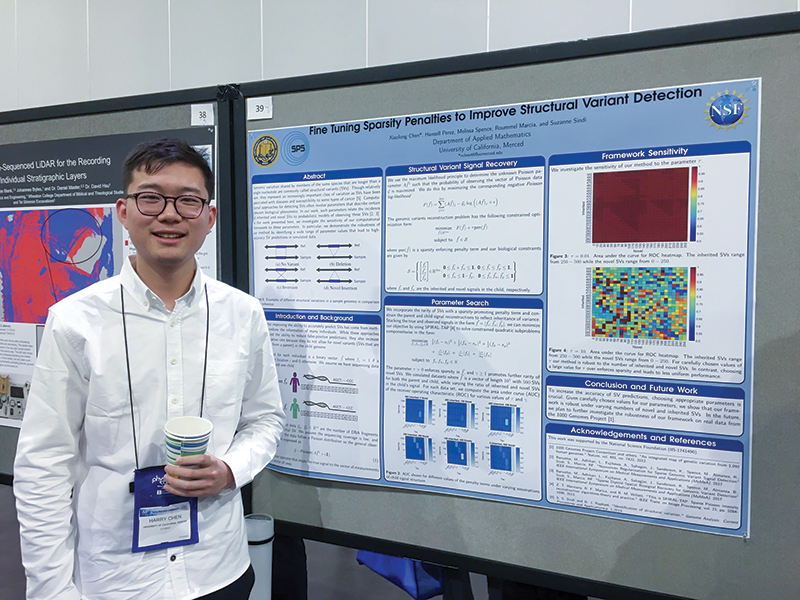Breaking Boundaries: The Interdisciplinary Nature of Physics
Breaking Boundaries: The Interdisciplinary Nature of Physics
2019 Sigma Pi Sigma Physics Congress (PhysCon)
 Physics is the study of matter and energy. Matter and energy make up everything. Therefore, physics is the study of everything. Well, things aren’t quite that simple, but our group of liberal arts students is fascinated by how interconnected the world is—it’s part of the reason we study physics in the first place.
Physics is the study of matter and energy. Matter and energy make up everything. Therefore, physics is the study of everything. Well, things aren’t quite that simple, but our group of liberal arts students is fascinated by how interconnected the world is—it’s part of the reason we study physics in the first place.
As the largest gathering of undergraduate physics students in the United States, PhysCon provides an unparalleled opportunity for networking, exposure to new ideas, and development as future physicists. It highlights the breakdown of disciplinary boundaries and the cutting-edge research that’s making waves in physics and the world at large. One of the highlights of our experience was the poster session, during which students had the opportunity to share their work with attendees.
Brightly colored posters, each surrounded by its own cluster of excited students and faculty, were organized into neat rows throughout the exhibit hall. The air buzzed with conversation as student researchers described their work to curious attendees. It was into this sea of sound, sights, and color that we waded, seeking out how student researchers experienced the interconnectedness of physics and the world.
Before long we bumped into Harry Chen, a student from the University of California Merced, who was presenting research at the intersection of physics, biology, and mathematics. He described his work as the experimentalists’ analogy of “turning knobs”—as fine-tuning the parameters of a particular model. His enthusiasm regarding the interdisciplinary nature of the project was almost tangible. He was excited to not only be gaining new perspectives but also to be making a difference.
We continued our journey around the room, taking in the different topics students were pursuing. In addition to more traditional physics fields like particle physics, there were posters on outreach, science policy, and even sociology.
Zubia Hasan, a student from Johns Hopkins University, shared her poster on condensed matter physics with us. She was working on the synthesis and evaluation of the compound CuTeO4. Hasan noted the necessity of cooperation between chemists and physicists in her lab and beyond. “[Y]ou will often find a chemistry lab and a physics lab side-by-side because they sort of always work in collaboration,” she told us.
Next, we stopped by an astronomy poster related to the TESS (Transiting Extrasolar Survey Satellite) mission, presented by Helena Richie, a student from the University of Pittsburgh. In her research group, members learn to do observational astronomy bottom-to-top. Richie says this provided her with a strong foundation in astronomical research but also allowed her to gain valuable leadership skills that can be applied anywhere.
As the crowd began to file out of the exhibit hall to make it to the next PhysCon plenary talk, we took a minute to grab coffee and reflect. We felt privileged to have heard so many different perspectives in such a short time. We were encouraged to hear that so many physicists think interdisciplinary research and communication is crucial—physics truly is the study of everything.

